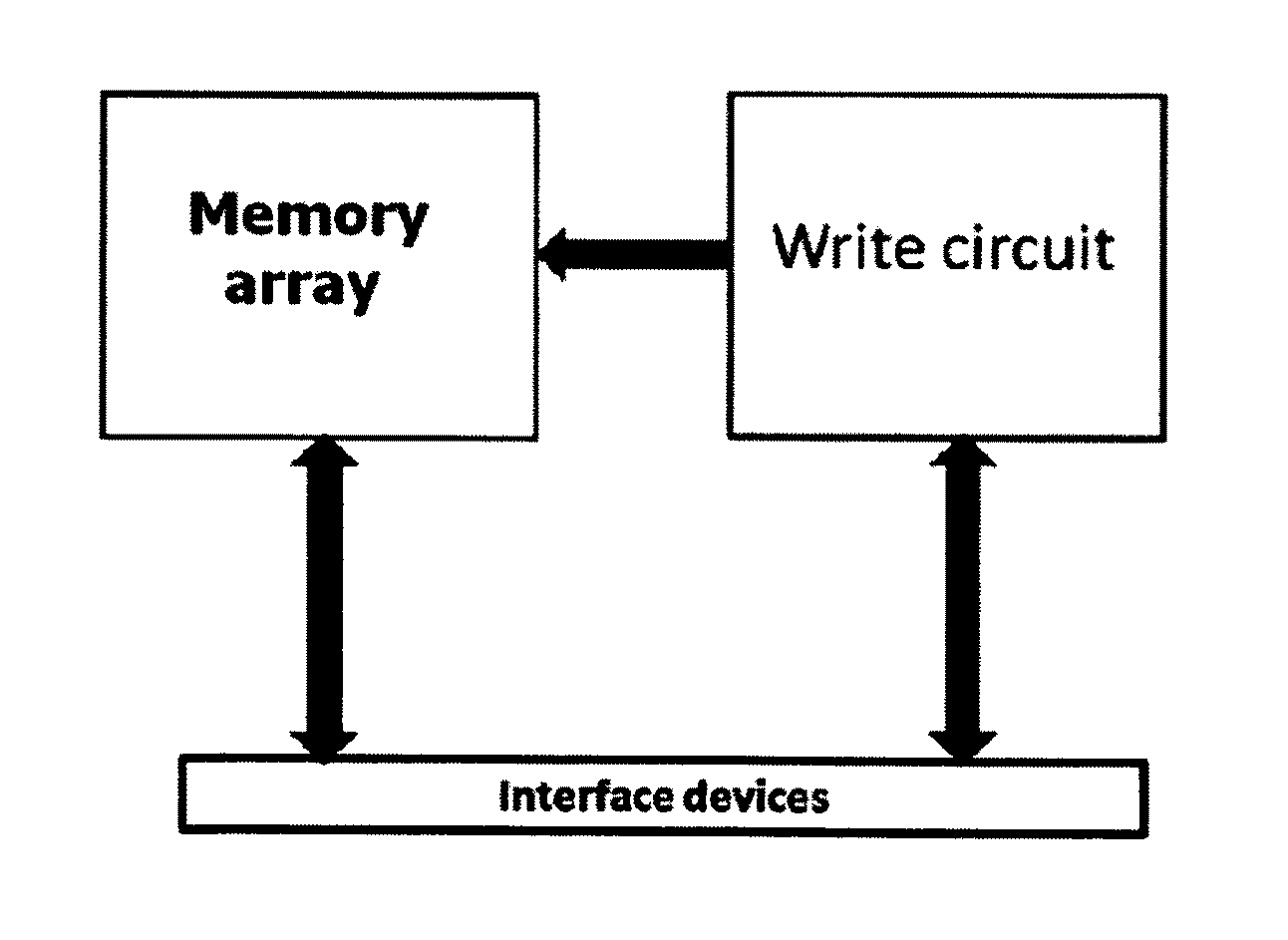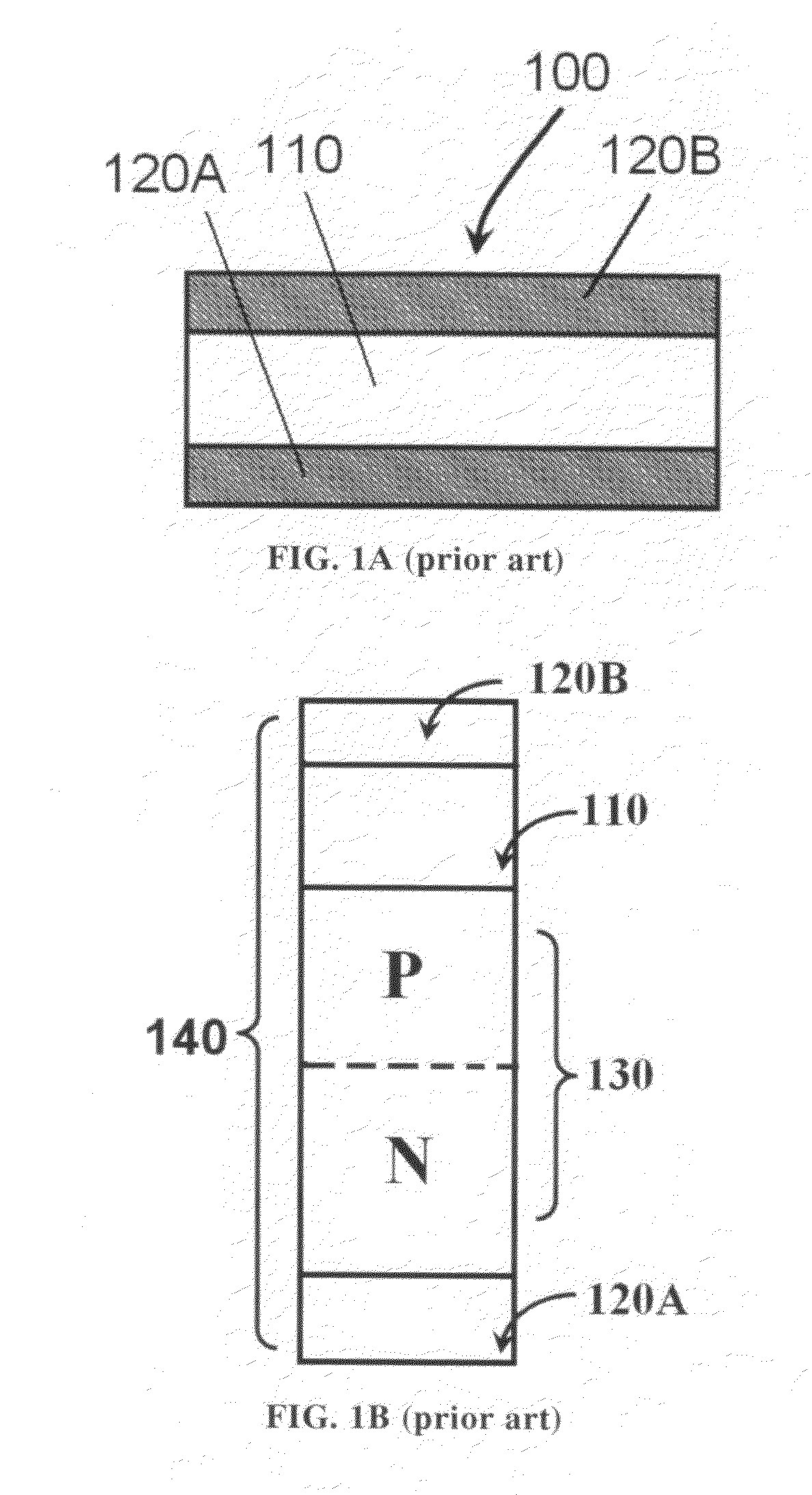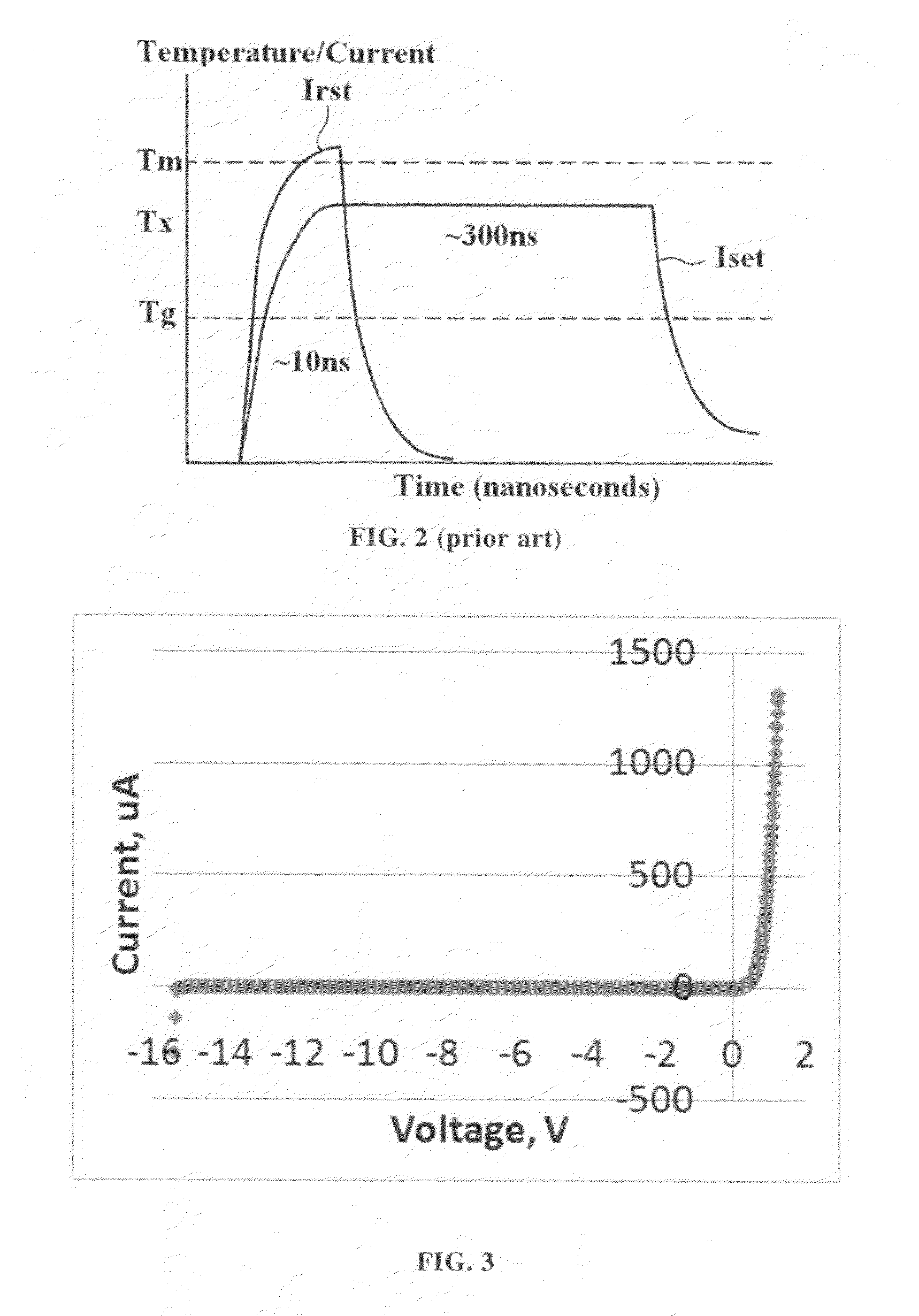Method of cross-point memory programming and related devices
a programming and memory technology, applied in the field of semiconductor memory devices, can solve the problems of difficult further scaling down memory devices, memory devices consume a relatively large amount of power, and their read/write speed is relatively slow
- Summary
- Abstract
- Description
- Claims
- Application Information
AI Technical Summary
Benefits of technology
Problems solved by technology
Method used
Image
Examples
Embodiment Construction
[0040]Several exemplary embodiments of the invention will now be described in details with reference to the accompanying drawings shown in FIGS. 1-8.
[0041]FIGS. 1-4 are explained in the background section of this invention. FIG. 5 shows a crossbar memory device 500 according to some embodiments of this invention and its electrical schematic. FIG. 6 shows examples of reverse recovery current pulses 600. FIG. 7 shows external signal pulses 700 applied to the memory device 500 in order to create various reverse recovery current pulses 600 needed to program the memory device 500 into one of non-volatile states.
[0042]A storage element 510 and a diode 530 electrically coupled in a crossbar memory device 500 as shown in FIG. 5. At least one of the storage element 510 or / and the diode 530 has finite (non-zero) reactance.
[0043]The storage element 510 is selected from the group consisting of a phase-change memory (PCM, PRAM, PCRAM, PC-RAM), a resistive memory (RRAM), a magnitoresistive memory...
PUM
 Login to View More
Login to View More Abstract
Description
Claims
Application Information
 Login to View More
Login to View More - R&D
- Intellectual Property
- Life Sciences
- Materials
- Tech Scout
- Unparalleled Data Quality
- Higher Quality Content
- 60% Fewer Hallucinations
Browse by: Latest US Patents, China's latest patents, Technical Efficacy Thesaurus, Application Domain, Technology Topic, Popular Technical Reports.
© 2025 PatSnap. All rights reserved.Legal|Privacy policy|Modern Slavery Act Transparency Statement|Sitemap|About US| Contact US: help@patsnap.com



